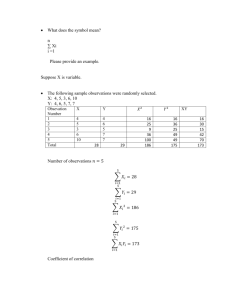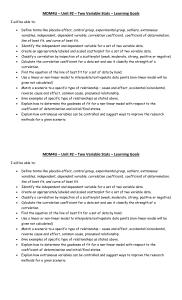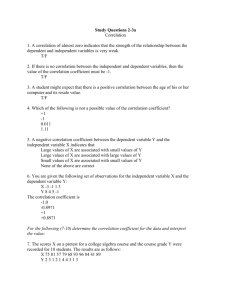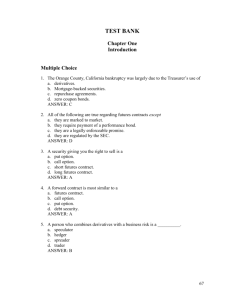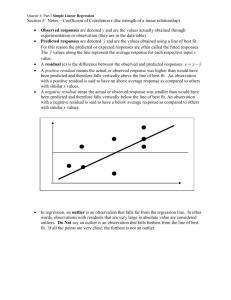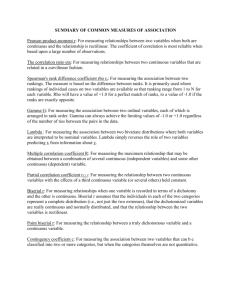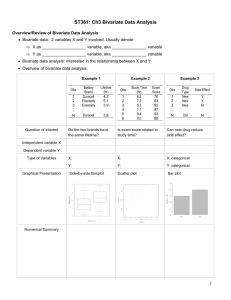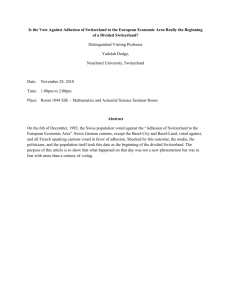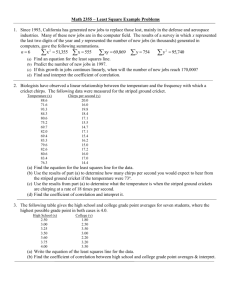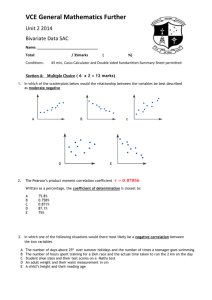- The Teachers` Beehive
advertisement
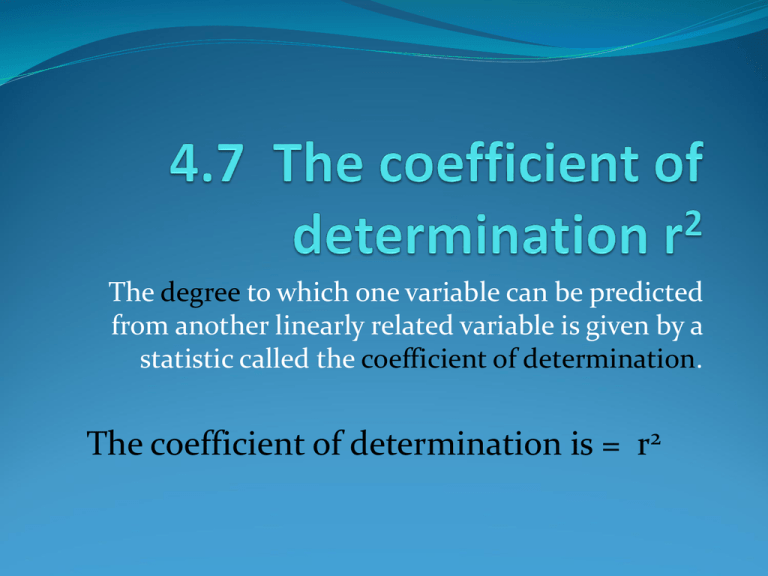
The degree to which one variable can be predicted from another linearly related variable is given by a statistic called the coefficient of determination. The coefficient of determination is = r2 The coefficient of determination is found by squaring the correlation coefficient r It tells us how well the values of the DV can be predicted by the values of the IV We usually convert r2 into % form and state “___% of the variation in the DV can be explained by the variation in the IV” Examples 1. If the correlation coefficient r = -0.451, calculate r2 and convert into % form ANSWER: r2 = -0.451 x -0.451 = 0.2034 0.2034 x 100% = 20.34% Examples 2. For the scatterplot shown, the coefficient of determination r2 = 0.789. Calculate the correlation coefficient r. Examples ANSWER: r= The scatterplot shows a NEGATIVE correlation so we choose the negative option (-0.8883) Interpreting the results 3. Data relating number of accidents (DV) and years of driving experience (IV) has the correlation coefficient r = -0.242. Calculate the coefficient of determination and interpret the results. ANSWER: r2 = -0.242 x -0.242 = 0.0586 0.0586 x 100% = 5.86% Interpreting the results “5.86 % of the variation in number of accidents can be explained by the variation in the years of driving experience” 4.8 Correlation and causality A correlation is a relationship between two variables. Causality is when the outcome of one variable is directly caused by another variable. Even for strong correlations, it is incorrect to conclude that one variable CAUSES another to change. There may be a high dependence but there are almost always other factors involved. Example There is a strong positive correlation between heights and weights of 200 surveyed people aged 12-25. Does this mean that all taller people are also heavier? What other factors may be involved? Solution: We CANNOT say that weight is CAUSED by height, though there is an obvious correlation between the two. Other factors may include diet, metabolism, exercise, stress levels, genetics etc... 4.9 Which graph? When investigating relationships between variables, use the table below to determine the most appropriate graphical representation. Insert table from page 122 Questions • Ex 4G Q1, 2, 3 (a,b) • Ex 4H Q1-4 • Ex 4I (copy table from pg 122 and use it to answer all of Q1) • From chapter review read through skills check pg 124. If you are unsure of any skills from ch4, now is the best time to ask for help. • Chapter review: Multiple choice Q1-15, Short answer Q1-5

